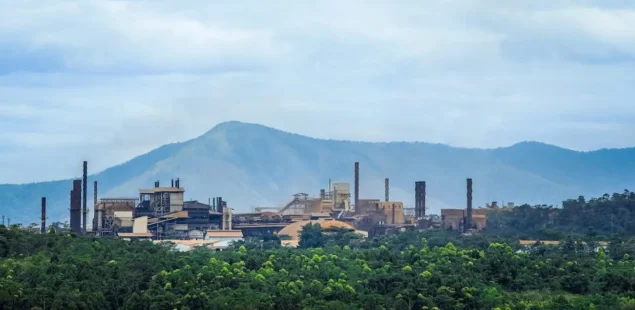
Glencore, diversified miner and commodity trader, has raised its long-term profit range for its Marketing (trading) arm to $2.3–$3.5 billion a year and plans to strip about $1 billion of costs from its industrial operations by end-2026, following a review of its global mines and smelters. The company said its trading division earned $1.35 billion in the first half, while the shares eased around 0.6% after the update.
$1bn efficiency plan and operating reset
Chief executive Gary Nagle said the review identified opportunities “to streamline our industrial operating structure, to optimise departmental management and reporting, and to support enhanced technical excellence and operational focus.” Glencore expects the savings, measured against a 2024 baseline, to be fully delivered by 2026, with initial benefits already visible in the second half of 2025. The company also flagged asset moves including shutting its last two copper mines at Mount Isa, Australia, and pursuing a sale of a non-operational copper refinery in the Philippines.
Trading guidance raised for the first time since 2017
Glencore’s through-the-cycle Marketing adjusted EBIT guidance moves up from the $2.2–$3.2 billion range set in 2017 to $2.3–$3.5 billion. The revision comes despite the early-July completion of the Viterra sale, which removes roughly $0.2 billion of annual earnings contribution; management cited improved opportunities across metals and energy books. First-half Marketing profit of $1.35 billion keeps the business broadly on track against the new range.
Production trends and guidance
Operationally, own-sourced copper output fell 26% year on year in the first half to 343.9 kt on lower grades and mine sequencing, but Glencore maintained full-year guidance of 850–910 kt, implying a weighted second-half recovery. Cobalt production rose 19% to 18.9 kt and energy coal volumes were broadly steady at 48.3 mt for the half, reflecting portfolio changes including the integration of Elk Valley Resources in steelmaking coal.
Market impact and pricing
Raising the trading range underscores the durability of Glencore’s Marketing franchise after recent volatility in metals and energy. The update lands amid unusual copper pricing dislocations tied to impending U.S. import tariffs: while CME futures have traded at a large premium, the London Metal Exchange remains the bellwether for global manufacturing demand, with the LME three-month price hovering near $9,800 per tonne this week. A second-half copper uplift would support both divisional earnings and group cash flow as the cost-reduction programme progresses.
Company Background and Market Context
Glencore is among the world’s largest commodity traders, coupling a global marketing platform with ownership stakes in mines and processing assets across copper, cobalt, zinc, nickel, coal and other commodities. The latest review tightens operating focus in the industrial portfolio while leaving Marketing to capitalise on arbitrage and logistics opportunities across metals and energy. Management narrowed production ranges for 2025 and reiterated that further detail on savings will be provided alongside half-year financial results in early August. The incremental reset follows a period of copper grade pressure, maintenance and asset transitions, as well as corporate actions including the disposal of Viterra.
Copper, central to Glencore’s metals mix and to electrification, has seen inventories and regional premiums swing on tariff-driven flows, but LME pricing near $9,800/t suggests demand outside the U.S. remains more measured. For Glencore, a stronger second-half production run-rate combined with lower overheads and an upgraded Marketing range would improve operating leverage to any further recovery in copper and allied metals.



